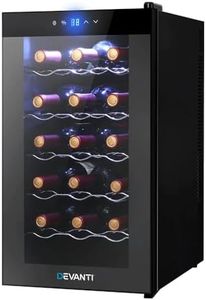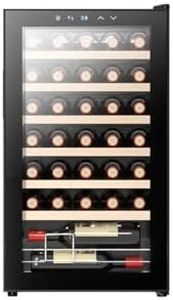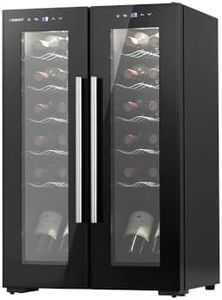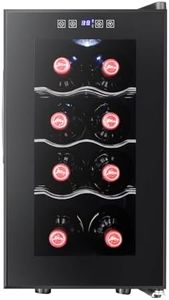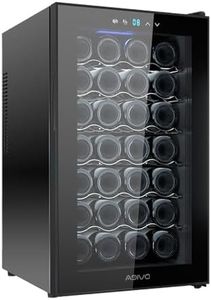We Use CookiesWe use cookies to enhance the security, performance,
functionality and for analytical and promotional activities. By continuing to browse this site you
are agreeing to our privacy policy
6 Best Wine Fridges
From leading brands and best sellers available on the web.Buying Guide for the Best Wine Fridges
Choosing the right wine fridge can greatly enhance your wine storage experience, helping you preserve the quality and flavor of your collection. To find the best fit for your needs, think about how you plan to use the fridge, the types of wine you usually store, and where you will place the appliance in your home. Focusing on a few key specifications will help you narrow down your options and select the most suitable model for your lifestyle.CapacityCapacity refers to the number of wine bottles a fridge can hold. It's important because it shapes how much wine you can store and helps you plan for your current collection and future growth. Wine fridges generally range from small units that hold around 6–20 bottles, to mid-size ones that can store 20–50 bottles, and larger ones that fit over 50 bottles. If you enjoy collecting different wines or plan to entertain often, a larger capacity might be useful, but if you only keep a few bottles on hand, a smaller fridge could be perfect.
Temperature ZonesTemperature zones indicate how many distinct temperature settings a wine fridge offers. Some fridges have a single zone, meaning the whole fridge stays at one temperature, ideal for storing one type of wine. Dual-zone fridges allow you to set two areas at different temperatures—this is useful for people who want to store both red and white wines at their optimal serving temperatures. If your wine preferences are varied, a dual-zone fridge offers more versatility, but for wine lovers who mainly stick to one type, a single-zone may be enough.
Cooling TechnologyWine fridges use either compressor or thermoelectric cooling systems. Compressor models regulate temperature more effectively and work well in warmer environments, making them suitable for garages or areas that aren’t air-conditioned. Thermoelectric fridges are usually quieter and more energy-efficient but perform best in stable, cooler rooms. When choosing, think about where you will place the fridge—if it's in a living space and you value quiet and efficiency, thermoelectric might suit you; if it's in a warmer or variable environment, consider a compressor fridge.
Size and PlacementSize refers to the physical dimensions of the wine fridge, while placement means whether it is designed to stand alone (freestanding) or be built into cabinetry (built-in/undercounter). Freestanding fridges usually need space around them for proper ventilation, while built-in models can be seamlessly integrated under counters. Always measure your available space before deciding, and consider your kitchen or home layout—choose a style that fits where you want it to go.
Vibration and UV ProtectionLow vibration and UV protection help maintain wine quality over time. Some fridges use special shelving and technology to minimize vibration, which can disturb wine sediments and harm flavor. Tinted or UV-resistant doors protect wine from harmful light. These features are particularly valuable if you buy fine wines for aging, but for short-term storage, they may be less critical.
Shelving and AccessibilityShelves inside wine fridges can be fixed or adjustable and may be made of wood or wire. Adjustable shelves provide flexibility for storing bottles of different sizes, while fixed shelves work fine for standard bottles. If you have sparkling wines, magnums, or unusual bottles, look for adjustable shelving. Easy access is also helpful if you entertain or use your collection regularly.

